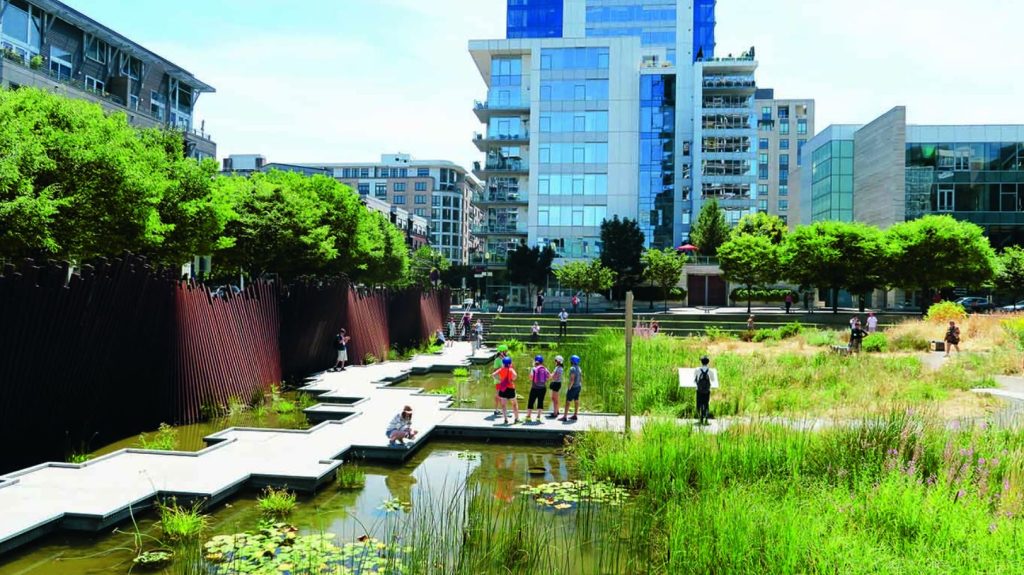The home of the Beatles didn’t always enjoy the same massive success as the iconic band. Liverpool used to be one of the centers for shipping after World War II. However, when such an industry declined in the UK in the mid-1970s, the city lost hundreds of businesses, money, and jobs. The signs of urban decay were everywhere.
Then, at the end of the twentieth century, Liverpool experienced a turnaround. It now boasts a diverse service economy that focuses on healthcare, banking and finance, manufacturing, retail, and even film. It achieves a growth rate that often beats the national average.
What’s the secret to its transformation? Answer: urban regeneration.
What Is Urban Regeneration?
Urban regeneration is when a neighborhood or a district undergoes improvement to become more attractive for investment and living. The goal of the activity is to improve the environment, give it a new life, and increase its value.
The maintenance or improvement includes various measures. These include:
- Building renovation, which involves refurbishing old or run-down buildings
- Infrastructure improvements such as fixing roads, sidewalks, parks, and other public spaces
- Land-use changes or changing what parts of the neighborhood are used for Community development or fostering civic pride and community involvement
- Business development, attracting new commercial activity and jobs to the neighborhood
- People and culture, which includes renovating old buildings, art galleries, cafes, bars, theaters – anything that makes people want to live there
- Environmental renewal, such as the creation of green spaces
- Housing development and improvement
- Promotion of cultural tourism and local businesses

The operation’s success can lead to a real estate boom in the area. However, business interests are not the only driving factor. It also promotes social equity and provides economic opportunities for locals. It encourages neighborhoods that are diverse, well-maintained, vibrant, attractive places to live in.
That is why urban regeneration has become a buzzword in the business world. It is also an area that attracts much attention from politicians looking to boost their local economies.
One of the most significant urban regeneration projects in Liverpool is ONE, a massive complex comprised of housing units, the largest open-air shopping facility in the country, and offices. Covering over 40 acres of underutilized land, it cost nearly a billion to build over several years. But it helped generate plenty of jobs and boosted the city’s tourism.
Meanwhile, the Liverpool Waters aims to transform the derelict docks of the city into a sustainable mixed-use space within 20 to 30 years. The project, which spans about 2 kilometers of the Mersey riverbanks, will cost about £5 billion to make.
The Good and the Bad of Urban Regeneration
Urban decay, which usually occurs when the city’s major industries go through significant decline, contributes to the increased rate of poverty in a region. The poor become poorer, and crime rates soar, affecting the whole area.
The heart of urban regeneration, therefore, is good. It is a way to save the city from misery and economic downturn.
However, one of its biggest problems is that it often leads to gentrification. This is where rich people flock into an area as they appreciate the improvement. In turn, this increases demand for properties or rent prices in the area, forcing out middle-income residents who can’t afford it.
The process is also complex and long. According to the World Bank, one of its most significant issues is sustainability. Usually, the government pumps a lot of money into a program that will fund and oversee the project.
But the overall costs are massive, so they need help from the business sector, especially investors. Fortunately, to lower the investment costs, they can work with a capital allowance company to maximize tax benefits.
Moreover, a single program can last for decades. Often, the fund dries up and the initiative has ended before the city can complete the project. Although the city can create a new program, its primary objectives may differ from the previous ones. Sometimes because of the challenges, all parties can drop the project entirely.
Urban regeneration, at its core, is not a bad thing. Instead, it is a necessary solution to save cities from decline and encourage equity.
Like any other strategy, however, it has its ups and downs. But it can be put to good use if all parties commit. The government should create a sound plan and monitor the program so that developers don’t take advantage of their positions to charge exorbitant rent prices or home prices. On the other hand, investors need to balance the desire for profit and sustainability.
But what is for sure is that urban regeneration will be around for a long time. As cities progress, our governments will keep working to make them even better places to live in.



